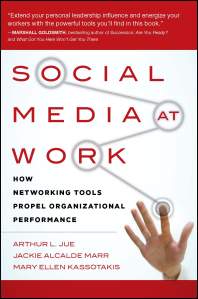 Hey, it’s performance review time, and your manager has asked you to complete your self-assessment. Are you filled with dread? Don’t know where tostart? Don’t know what to write? Well, here are my personal tips to help you out.
Hey, it’s performance review time, and your manager has asked you to complete your self-assessment. Are you filled with dread? Don’t know where tostart? Don’t know what to write? Well, here are my personal tips to help you out.
As HR practitioners, we often assume that employees simply know how to do a performance review and how to go about completing their self-assessment. But, my informal research tells me that people don’t really know what to do, unless they’ve seen a good model performance review, or, they’ve had the benefit of coaching in the art of performance reviews.
Step 1: Start the hunt
Review your performance dimensions so you know what you need to hunt for. What are your job competencies embedded in your performance review? What were your performance objectives? Are there any other elements that you would like to highlight?
Step 2: Hunt for the good, the bad and the ugly
There are three elements that I find personally useful here.
- Scan your sent email from the last year and see if you can remind yourself of the big projects that you worked on over the past 12 months. The cognitive bias of recency means that you’ll only remember recent achievements (in the past three to six months) so take some time to remind yourself of the good stuff you did right at the beginning of the performance year. Pay particular attention to congratulatory emails from others — they have high value in the performance review cycle.
- Your performance system may have a journal or notes feature, or, you may have been super-organised and collected little nuggets of achievements and accomplishments in a Word document or a paper file. Open up your performance notes and remind yourself of all the good (and sometimes the stupid or bad) things that you did.
- Use your workplace systems to get good numeric or quantitative evidence that will support your achievements. For example, I often teach webcasts, and I send out an online evaluation survey after each event. So I can easily review all the events that I produced, and work out the average satisfaction score for each event. Another example: one of my roles is to answer questions from the HR group about the performance cycle and our performance management system. I centralised all these questions into an online forum, so I can count how many questions were posted, and how long it took me to reply to questions.
Step 3: Write up your results
If you managed to find plenty of evidence during your hunt, then you’ll find it easy to write up your comments for each performance dimension. For your competencies, you’ll need to use evidence to call out the behaviours that demonstrate proficiency in that competency. For example, for a competency such as Presentation Skills, you may write something like:
I presented twice at our staff meeting on the use of social networking tools for learning within our division. I also posted several blog posts on this topic on our internal team blog. Four comments on the blog showed that my peers in China and Hong Kong valued this information. For the last presentation I did, I scored 86% satisfaction from participants.
For your performance objectives, you need to include a blend of qualitative and quantitative evidence. For example, for a performance objective around building relationships with customers, you may write something like:
For the Carlton Company, I arranged a visit to the CVC in California. I clarified the purpose and target outcomes with the customer’s Vice President, and shaped the agenda in California to address this, collaborating with Product Development and Marketing. Later, I arranged four visits to existing customers in Australia and New Zealand (Westpac, Qantas, Air New Zealand, NBN Company). As an outcome, Carlton signed a new deal worth $1.2 million.
 In essence, you need to be as specific as you can, and give good evidence to support your achievements. Sometimes employees tell me that they feel that they are running out of achievements, so they end up repeating themselves. A little bit of repetition is okay, but don’t use the same example for every single competency and performance objective — you’ll end up sounding one-dimensional, and one achievement does not illustrate a trend, which is what we are trying to illustrate in our performance reviews.
In essence, you need to be as specific as you can, and give good evidence to support your achievements. Sometimes employees tell me that they feel that they are running out of achievements, so they end up repeating themselves. A little bit of repetition is okay, but don’t use the same example for every single competency and performance objective — you’ll end up sounding one-dimensional, and one achievement does not illustrate a trend, which is what we are trying to illustrate in our performance reviews.
So, best wishes for your self-assessment. Do leave me a comment if you find these tips useful (or, useless!).






 There have been a series of excellent posts, particularly
There have been a series of excellent posts, particularly 
 Check out the new
Check out the new